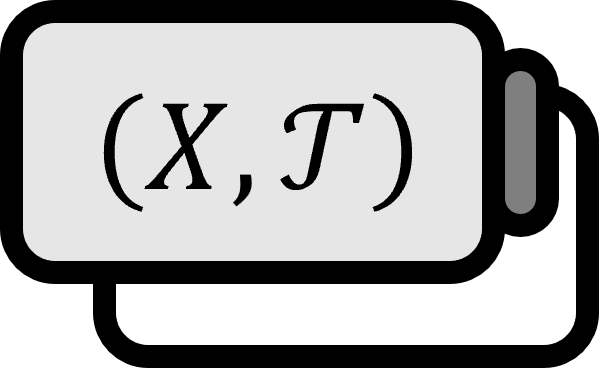Various Equivalent Conditions of Connected Spaces
Definitions 1
For a topological space $X$, a subset $A \subset X$ is $$ A \ne \emptyset \\ A \ne X $$ then $A$ is called a Proper Subset of $X$. For two proper subsets $A,B \subset X$ if $$ \overline{A} \cap B = \emptyset \\ A \cap \overline{B} = \emptyset $$ then $A$ and $B$ are called Separated Sets or simply Separation.
Equivalent Conditions for Connected Spaces
Including the above definition, various equivalent conditions for connected spaces can be found. Let’s start with disconnected spaces like we did for connected spaces.
Disconnected Space
The following propositions are equivalent:
- (1): $X$ is a disconnected space.
- (2): $X$ is a union of some separated sets.
- (3): There exists a surjective continuous function $f : X \to \left\{ a, b \right\}$ for a discrete space $\left\{ a, b \right\}$.
- (4): There exists an open and closed proper subset.
- (5): There exists a proper subset $A$ satisfying $\overline{A} \cap \overline{X \setminus A} = \emptyset$.
Connected Space
The following propositions are equivalent:
- (1)’: $X$ is a connected space.
- (2)’: $X$ cannot be a union of any separated sets.
- (3)’: There does not exist a surjective continuous function $f : X \to \left\{ a, b \right\}$ for a discrete space $\left\{ a, b \right\}$.
- (4)’: There does not exist an open and closed proper subset.
- (5)’: There does not exist a proper subset $A$ satisfying $\overline{A} \cap \overline{X \setminus A} = \emptyset$.
As you can see, they can all be represented as the negation of disconnected space properties.
Munkres. (2000). Topology(2nd Edition): p148. ↩︎
